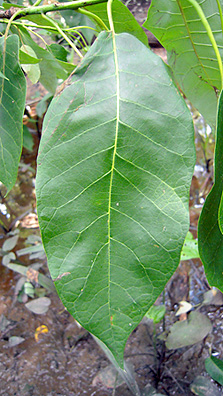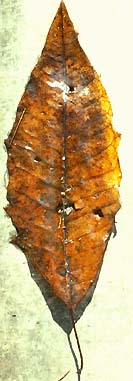


Water tupelo is a large, long lived deciduous tree common to southern U.S. wetlands and floodplains. It is valuable for timber uses and wildlife offerings. Water tupelo's ability to withstand prolonged inudation makes it a integral component of important wetland ecosystems.
Light ![]()
Water tupelo is shade intolerant and requires regeneration by clearcut or seed-tree methods. The species stump sprouts readily. Seedlings and saplings are uniquely able to tolerate prolonged flooding or surface saturation.
Water
![]()
![]()
![]()
![]()
![]()
![]()
A tree found in wetlands, which periodically flood. Probably only baldcypress exceeds it in flood tolerance, very common in the southern U.S.
Growth
![]()
Size
![]()
Large tree to 100 feet, several feet in diameter, clear trunk which is typically swolen at base, roots often grow out of soil.
Timber Value ![]()
Water tupelo's light wood is used for boxes, pallets, crates, baskets, and furniture. The characteristic swollen butt of the tree is used for pulp products.
Wildlife Value ![]()
Fruit are eaten by many wetland species, and are often found floating on water. Deer feed on foliage and sprouts.
Attracts wood ducks, several species of birds, squirrels, raccoons, deer
Fun Facts
Some taxonomists place the genus Nyssa in the Cornaceae (dogwood) family. Wood from the roots and swollen base is very spongy and is used locally for corks, duck decoys and fish-net floats. Flowers are valued as a resource in honey production.
Latin Meaning
Nyssa: Greek "Nysa" - a water nymph /
aquatica: of water
Home - I.D. Fact Sheet - USDA Silvics Manual
Landowner Factsheets © 2004 Virginia Tech Forestry Department, all rights reserved. Text, images, and programming by: Dr. Jeff Kirwan, Dr. John R. Seiler, John A. Peterson, Edward C. Jensen, Guy Phillips, or Andrew S. Meeks.